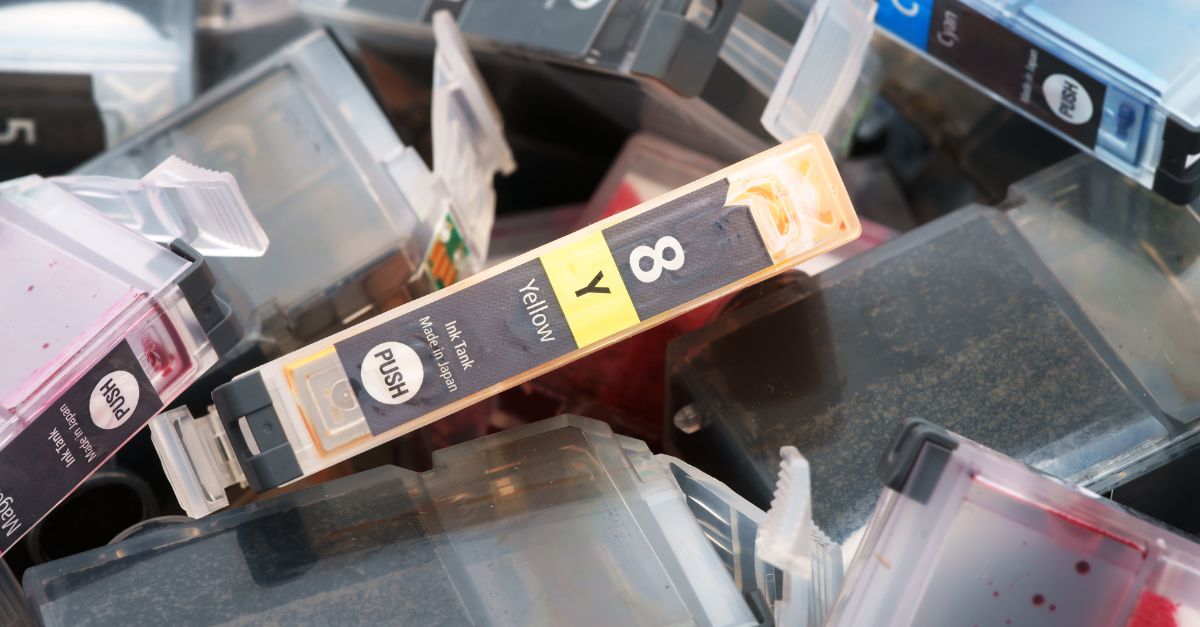MICR Ink vs. MICR Toner - Know the Difference

Remember that episode of “Friends” where Phoebe asks "What is Toner?" right before she’s about to sell it over the phone? Even in 2024, a lot of people are still like Phoebe, and that’s OK.
People are more familiar with ink, and it's easier to understand and there are more use cases for it than just printing. Toner, on the other hand, is not as straightforward but has its advantages. While both ink and toner serve the same purpose of transferring text and images onto paper, they operate on distinct principles and offer unique advantages. Let's explore the key differences between ink and toner, as well as the printers required for each.
What is Ink?

Inkjet printers utilize liquid ink stored in cartridges or tanks, which is sprayed onto the paper in tiny droplets to create the desired images and text.
Ink printers employ liquid ink stored in cartridges, offering vibrant colors and intricate detailing, which caters to tasks such as photo printing and graphic design. Inkjet printers boast versatility, capable of handling various paper types and sizes, including glossy photo paper and specialty media, enhancing their appeal for diverse printing needs.
What is Toner?

Laser printers use powdered toner cartridges, which are fused onto the paper using heat and pressure to create prints.
Laser printers operate by utilizing powdered toner stored within tanks and cartridges, making them well-suited for high-volume printing needs and generating crisp, smudge-resistant prints, particularly advantageous in office settings and for text-centric documents.
Renowned for their rapid printing speeds, laser printers excel in handling large-scale printing tasks efficiently. Additionally, toner prints generally exhibit greater durability and resilience against smudging when compared to ink prints, further enhancing their appeal for various printing requirements.
Laser vs. Ink Printers
Understanding the differences between ink and toner also involves knowing the printers required for each printing medium:
Inkjet Printers: Designed specifically for ink-based printing, inkjet printers are equipped with mechanisms to spray liquid ink onto paper. They are suitable for tasks that demand high-quality color output, such as photo printing and graphic design.
Laser Printers: Tailored for toner-based printing, laser printers use heat and pressure to fuse powdered toner onto paper. They excel in high-volume printing environments, offering fast printing speeds and durable, smudge-resistant prints, making them ideal for office use and text-heavy documents.
Should you use MICR toner or MICR ink when printing checks?

In the realm of check printing, MICR (Magnetic Ink Character Recognition) is the most important factor to consider when printing checks. MICR ink and toner contains iron oxide needed for banking machines to read and scan the MICR lines of checks that contain accounting and routing numbers without the need for manual data entry.
MICR is a requirement by the American Banking Association, so either must be used when printing checks. But which do you choose?
When printing checks at high volume, MICR toner is best for clear, non-smudged check printing. MICR ink can work just as well with well-engineered inkjet printers that are designed to print checks at high speeds. If you're printing low volume, either desktop laser or inkjet printing will work as well.
Ink and toner represent two distinct printing mediums, each with its own set of characteristics and applications. By understanding the differences between ink and toner, as well as the printers required for each, you can make informed decisions that align with your specific printing needs, whether it be producing vibrant photos or efficiently printing large volumes of documents.
Related Posts

Bank Tellers Are Going Away. What's Next?
The landscape of banking has undergone significant transformation. One notable shift is the steady decline in bank teller jobs, a trend driven by technological advancements,..

Platform Revolution: 4th Generation of Core Banking
The 4th generation of core banking has arrived, bringing with it a platform revolution that is reshaping the banking industry. This transformation heralds the transition from..

5 ATM Features Banks Need in a Cashless Society
As contactless payments, digital wallets, and online banking increasingly become the norm, the reliance on cash is steadily diminishing. This shift towards a cashless society is..



Leave a Reply